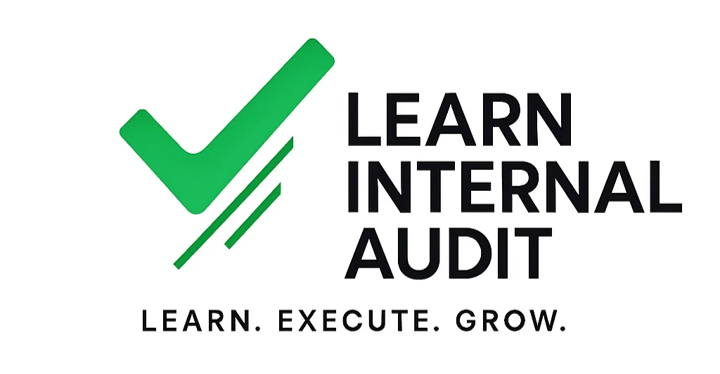When most new internal auditors search for an “internal audit checklist,” what they find online is often vague, overly generic, or worse—irrelevant to the business they’re auditing. Look at these articles from the top results on google which are full of fluff:
scrut.io
auditboard.com
datasnipper.com
While downloadable templates and examples are useful, the real value comes from learning how to build your own internal audit checklist—based on the unique business processes and risks of the entity you’re auditing.
This article will walk you through a practical, risk-based approach to creating internal audit checklists that are relevant, focused, and aligned to real controls. It’s a mindset shift from copying to thinking, from ticking boxes to understanding business risks.
Why One-Size-Fits-All Checklists Don’t Work
Every organization is different. Even if two companies operate in the same industry, their processes, systems, policies, risk appetite, and control maturity can vary significantly. A checklist built for one may be irrelevant—or even misleading—for another.
Copy-pasting generic internal audit checklists can lead to:
- Overlooking key risks unique to the entity
- Auditing steps that are not control-relevant
- Missing the “why” behind procedures
To be effective, your internal audit checklist must be custom-built around the business process you’re auditing.
Step-by-Step Approach to Build Your Own Internal Audit Checklist
1. Understand the Business Process
Before you can audit anything, you must understand how the process works. This begins with:
- Reviewing SOPs, workflows, and system screenshots (if available)
- Conducting walkthroughs with process owners
- Mapping the process from end to end
For example, in the Sales process, you might note:
- Inquiry received from customer
- Quotation issued
- Follow-up done
- Order confirmation received
- Sales Order created
This forms your base understanding—not your checklist yet.
2. Identify Where the Risks Lie
Now, ask the key question for each process step:
“If this step is skipped, delayed, or done incorrectly—what could go wrong?”
For example:
- If follow-up is not done, it may lead to lost orders (reputational and revenue risk)
- If quotation pricing is incorrect, it may cause underpricing or loss of profitability
- If order confirmation is missed, it may result in delivery of unapproved goods
This step helps you distinguish routine steps from control points.
3. Define the Control Objective
Once you’ve identified the risk, determine what kind of control should be in place to mitigate it:
- Preventive or detective?
- Manual or automated?
- Policy-based or system-driven?
For example:
- Pricing controls may be automated in the ERP via pricing conditions
- Follow-ups may be governed by a CRM system with alerts or SLAs
- Order confirmations may require documented approvals or customer sign-offs
4. Draft Internal Audit Checklist Questions Based on Controls
Now you’re ready to write your checklist—not as a generic task list, but as control-focused questions.
Avoid: “Was a quotation issued?”
Better: “Is the pricing in quotations system-derived and aligned with pricing policy?”
Avoid: “Was a sales order created?”
Better: “Was the sales order created only after written confirmation from the customer?”
Each checklist item should help you validate whether a control is present, designed well, and working.
5. Classify and Structure the Checklist
You may now group your internal audit checklist under control areas like:
- Authorization controls
- Segregation of duties
- Accuracy and completeness
- System controls
- Exception handling
Use a simple format with columns like:
| # | Control Objective | Internal Audit Checklist Item | Control Type (Preventive/Detective) | Source Document |
| 1 | Ensure accurate pricing in quotation | Is pricing auto-fetched from approved master data? | Preventive | Quotation copy |
| 2 | Prevent loss of sales opportunity | Are all open inquiries being followed up within SLA? | Detective | CRM report |
This becomes your working tool during audit fieldwork.
Case Study: Checklist Creation in Sales Process
Let’s revisit the Sales process example.
Step: Quotation Issued
- Risk: Pricing errors may lead to financial loss or lost orders
- Control Objective: Ensure pricing is accurate and policy-driven
- Checklist Item: “Is quotation pricing system-linked or approved as per pricing policy?”
Step: Follow-Up on Open Inquiries
- Risk: Sales lost due to poor customer engagement
- Control Objective: Ensure inquiries are tracked and acted upon
- Checklist Item: “Is there a report tracking aged inquiries and pending follow-ups?”
Step: Sales Order Created
- Risk: Orders processed without customer confirmation
- Control Objective: Ensure customer intent is documented
- Checklist Item: “Was the sales order created only after formal order confirmation?”
You now have an internal audit checklist that reflects both process understanding and risk awareness.
Tips to Build Effective Internal Audit Checklists
- Don’t include steps just for the sake of it—each item should tie to a control
- Think like a risk manager, not just a compliance checker
- Validate your checklist with the process owner before fieldwork
- Update the checklist over time as you learn more about the entity
Conclusion
Knowing how to build your own internal audit checklist is one of the most valuable skills you can develop as a new auditor. It transforms you from a template user into a critical thinker who understands processes, identifies risks, and evaluates controls with purpose.
This is exactly the kind of skill we train in the Advanced Course on Internal Audit—not just what to do, but how to think like an internal auditor.
If you’re looking to strengthen your audit skills, build confidence in walkthroughs, and write better audit reports, explore our complete training program here:

